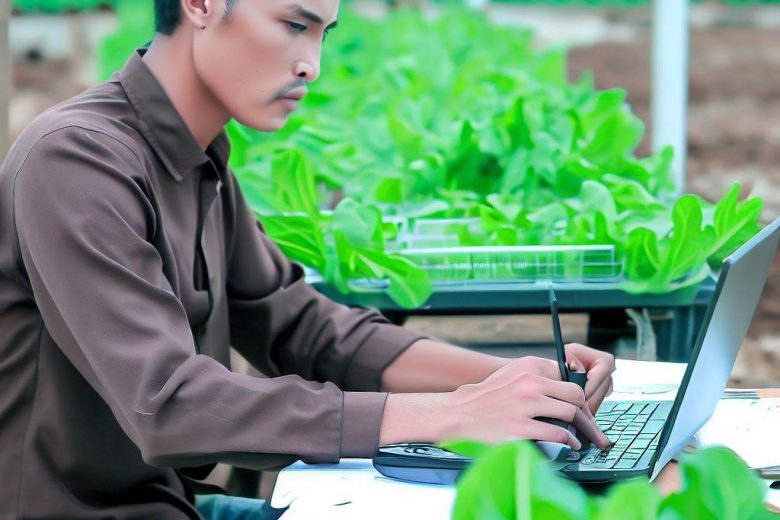In recent years, fish farming has gained significant popularity as a lucrative business opportunity. This comprehensive guide aims to provide you with a well-structured fish farming business plan in PDF format. Whether you’re a seasoned entrepreneur or a beginner in the industry, this article will equip you with the essential knowledge and insights to start and run a successful fish farming venture.
[Pdf Sample] Fish Farming Business Plan Proposal Docx
To write a business plan, here is a breakdown of how it should be structured and what should be in each category. After this instruction, I will provide you with a sample of one I wrote for my farm, let us go:
Read Also: [Pdf Sample] Business Plan For Sunflower Farming Docx
Abstract
The abstract of your fish farming business plan provides a concise overview of the key aspects covered in the article. It serves as a quick reference for readers interested in specific sections.
Executive Summary
The executive summary highlights the crucial elements of your fish farming business plan, providing a snapshot of the entire venture. It outlines the goals, objectives, and strategies required to achieve success in the industry.
Read Also: [Pdf Sample] Business Plan For Onion Farming Docx
Market Analysis
Conducting a thorough market analysis is essential for understanding the current trends, demand, and competition in the fish farming industry. This section explores market size, consumer preferences, and potential opportunities for growth.
Choosing the Right Fish Species
Selecting the appropriate fish species is vital for the success of your fish farming business. We delve into the factors to consider when choosing fish species, such as market demand, climate suitability, growth rate, and profitability.
Read Also: [Pdf Sample] Business Plan For Tomatoes Plantation Docx
Site Selection and Pond Construction
Choosing the right site for your fish farm is crucial. We discuss the criteria for selecting an ideal location, including water source, soil quality, accessibility, and environmental considerations. Additionally, we explore the construction process of fish ponds, ensuring they meet the necessary specifications.
Water Management and Quality
Maintaining optimal water conditions is essential for the health and growth of your fish. This section covers water quality parameters, water source management, aeration techniques, and monitoring strategies to ensure a conducive environment for your fish.
Read Also: [Pdf Sample] Business Plan For Potato Farming Docx
Fish Feeding and Nutrition
Proper nutrition is vital for the growth and development of your fish. We delve into the nutritional requirements of different fish species, feed formulation, feeding strategies, and cost-effective feeding practices to maximize profitability.
Disease Prevention and Management
Fish diseases can have a devastating impact on your farm’s productivity. This section provides insights into disease prevention measures, early detection techniques, effective treatment options, and biosecurity protocols to safeguard your fish from potential health risks.
Harvesting and Processing
When it’s time to harvest your fish, proper techniques and handling are essential to maintain product quality. We discuss various harvesting methods, post-harvest handling practices, and processing options to ensure you deliver the best possible products to the market.
Read Also: [Pdf Sample] Business Plan For Chili Pepper Farming Docx
Marketing and Sales Strategies
Developing a robust marketing and sales strategy is crucial for the success of your fish farming business. We explore effective marketing channels, branding, distribution networks, pricing strategies, and customer relationship management to help you capture a significant market share.
Financial Projections and Budgeting
Accurate financial projections and budgeting are essential for assessing the financial viability of your fish farming venture. This section guides you through the process of estimating costs, revenue projections, profit margins, and return on investment (ROI) analysis.
Legal and Regulatory Considerations
Complying with the legal and regulatory framework is vital for running a fish farming business. We discuss the necessary licenses, permits, and regulations you need to be aware of, ensuring your operation remains within the legal boundaries.
Read Also: [Pdf Sample] Business Plan For Cabbage Farming Docx
Sustainability Practices
Embracing sustainable practices in fish farming is not only environmentally responsible but also beneficial for long-term profitability. We highlight eco-friendly approaches, water conservation methods, waste management strategies, and the importance of social responsibility in the industry.
Risks and Challenges
Every business venture comes with its fair share of risks and challenges. In this section, we identify potential risks in the fish farming industry and provide insights into risk management techniques to mitigate their impact on your business.
Here Is The Download Link To Business Plan Proposal For Fish Farming By Agrolearner
Business Model for Agrolearner.com’s Fish Farming Business
Value Proposition: Agrolearner.com Farm aims to provide the local market with high-quality, sustainable, and locally-produced fish products. Our value proposition includes:
Fresh and Nutritious Fish: We offer fresh fish that is locally sourced, ensuring superior taste, texture, and nutritional value.
Sustainability: Our farming practices prioritize environmental responsibility and promote the long-term health of aquatic ecosystems.
Traceability and Transparency: We provide full transparency regarding our farming methods, allowing customers to trace the origin and production process of our fish products.
Customer Education: We aim to educate consumers about the benefits of sustainable aquaculture and the importance of supporting local food systems.
Customer Segments: Agrolearner.com Farm targets the following customer segments:
Health-conscious individuals: Customers who prioritize nutritious and sustainably sourced food.
Seafood enthusiasts: Individuals with a preference for high-quality seafood.
Restaurants and chefs: Establishments seeking fresh, locally produced fish for their menus.
Channels: We utilize multiple channels to reach our target customers and distribute our fish products:
Direct Sales: Customers can purchase our fish directly from our farm or through online platforms.
Partnerships: Collaborating with local markets, restaurants, and distributors to establish reliable sales channels.
Online Presence: Leveraging our website and social media platforms to engage with customers, share information, and promote our products.
Customer Relationships: Agrolearner.com Farm focuses on building strong customer relationships by:
Quality and Consistency: Delivering consistently high-quality fish products to meet customer expectations.
Communication: Engaging with customers through social media, newsletters, and educational content.
Feedback and Support: Welcoming customer feedback and providing assistance to address inquiries and concerns.
Revenue Streams: Our main revenue streams come from the sale of fish products to customers and partners, including:
Wholesale and Retail Sales: Selling fish directly to customers through various channels, including online and on-site.
Restaurant and Chef Partnerships: Supplying fish to local restaurants and chefs who prioritize fresh and sustainable ingredients.
Key Activities: Agrolearner.com Farm undertakes the following key activities:
Fish Farming: Cultivating fish species, such as tilapia and catfish, through proper management and nutrition.
Harvesting and Processing: Implementing efficient and humane harvesting techniques and processing fish to maintain quality.
Marketing and Sales: Developing and implementing effective marketing strategies, building partnerships, and managing customer relationships.
Sustainability Practices: Implementing environmentally responsible practices, including water and energy conservation, waste management, and community engagement.
Key Resources: The key resources required for Agrolearner.com Farm’s fish farming business include:
Land and Facilities: Acquiring suitable land and constructing ponds, infrastructure, and processing facilities.
Fish Stock and Feed: Sourcing high-quality fish stock and formulating nutritious feed for optimal growth.
Skilled Workforce: Employing experienced aquaculture professionals and support staff.
Technology and Equipment: Utilizing modern technology, equipment, and tools for efficient farm operations.
Key Partnerships: Agrolearner.com Farm establishes strategic partnerships to support its operations and enhance market reach:
Local Suppliers: Collaborating with local suppliers for fish stock, feed ingredients, and other necessary resources.
Distribution Partners: Forming partnerships with local markets, distributors, and seafood wholesalers to reach a wider customer base.
Restaurants and Chefs: Building relationships with local restaurants and chefs to secure long-term partnerships for the supply of fresh fish.
Cost Structure: The main costs involved in Agrolearner.com Farm’s fish farming business include:
Operational Costs: Expenses related to farm operations, including labor, utilities, feed, and maintenance.
Infrastructure Costs: Investments in land, pond construction, processing facilities, and equipment.
Marketing and Promotion: Expenses for marketing activities, online presence, and promotional materials.
Compliance and Insurance: Costs associated with regulatory compliance and insurance coverage.
Key Metrics: Agrolearner.com Farm tracks the following key metrics to assess the performance and success of the business:
Sales Revenue: Monitoring the revenue generated from fish sales to evaluate financial performance.
Customer Satisfaction: Measuring customer feedback, reviews, and repeat purchases to gauge customer satisfaction levels.
Production Efficiency: Assessing fish growth rates, feed conversion ratios, and other operational metrics to optimize production processes.
Sustainability Metrics: Monitoring water and energy consumption, waste management, and adherence to sustainability goals.
By executing this business model, Agrolearner.com Farm aims to establish a profitable and sustainable fish farming business while meeting the needs of health-conscious consumers and contributing to the local food ecosystem.
Required Capital to Start a Fish Farming Business
The required capital to start a fish farming business can vary depending on several factors, such as the scale of operation, the type of fish species being farmed, and the infrastructure needed. Generally, the capital required includes expenses for land or pond lease, construction or renovation of ponds, purchase of fingerlings (young fish), feed, equipment, water management systems, and other operational costs.
Small-scale fish farms can start with a few thousand dollars, while larger commercial operations may require substantial investments ranging from tens of thousands to millions of dollars.
Time to Start Generating Profits from a Fish Farm
The time it takes to start generating profits from a fish farm can vary depending on various factors, including the fish species being farmed, the growth rate of the fish, market demand, and management practices. In general, it takes several months to a few years to reach the stage where the fish are ready for harvest and sale.
Some fast-growing fish species may allow for quicker returns on investment, while others with longer growth cycles may require more patience. Effective management practices, such as proper feeding, water quality management, and disease prevention, can help expedite the growth process and shorten the time to profitability.
Feasibility of Fish Farming in Landlocked Areas
Fish farming can be done in landlocked areas, although there are certain considerations to keep in mind. While landlocked areas may lack access to natural water bodies like rivers or lakes, fish farming can still be carried out successfully using artificial ponds or tanks. Adequate water supply is crucial for fish farming, and landlocked areas may require alternative sources such as groundwater or rainwater harvesting systems. Additionally, transportation logistics for inputs and outputs should be carefully planned to ensure the smooth operation of the fish farm and access to markets.
Key Factors Affecting Fish Growth
Several key factors influence the growth of fish in a farming environment. These factors include water quality parameters such as temperature, dissolved oxygen levels, pH, and ammonia concentration. Proper nutrition and feeding practices, including the quality and composition of the fish feed, play a vital role in fish growth.
Genetics and the specific breed or strain of fish being farmed can also affect growth rates. Environmental factors like stocking density, availability of space, and light exposure can influence fish growth and overall health. Disease management and prevention, including timely vaccinations and biosecurity measures, are also critical for ensuring optimal fish growth.
Government Subsidies and Funding Options for Fish Farming Startups
In many countries, government subsidies and funding options are available to support fish farming startups. These initiatives aim to encourage the growth of the aquaculture industry, create employment opportunities, and enhance food security.
Government support can come in the form of financial assistance, grants, low-interest loans, tax incentives, training programs, and technical guidance. These funding options and subsidies vary by region and country, and aspiring fish farmers should research and explore the opportunities provided by local government agencies, agricultural departments, and fisheries authorities.
Engaging with relevant industry associations and networking with experienced fish farmers can also provide valuable insights into available funding sources and support programs.
Conclusion
Agrolearner.com Farm is poised to become a leading fish farming business, providing high-quality fish products to meet the demand of health-conscious consumers and local markets. By adhering to sustainable practices, investing in modern infrastructure, and implementing effective marketing strategies, we are confident in our ability to achieve profitability and contribute to the growth of the fish farming industry.



